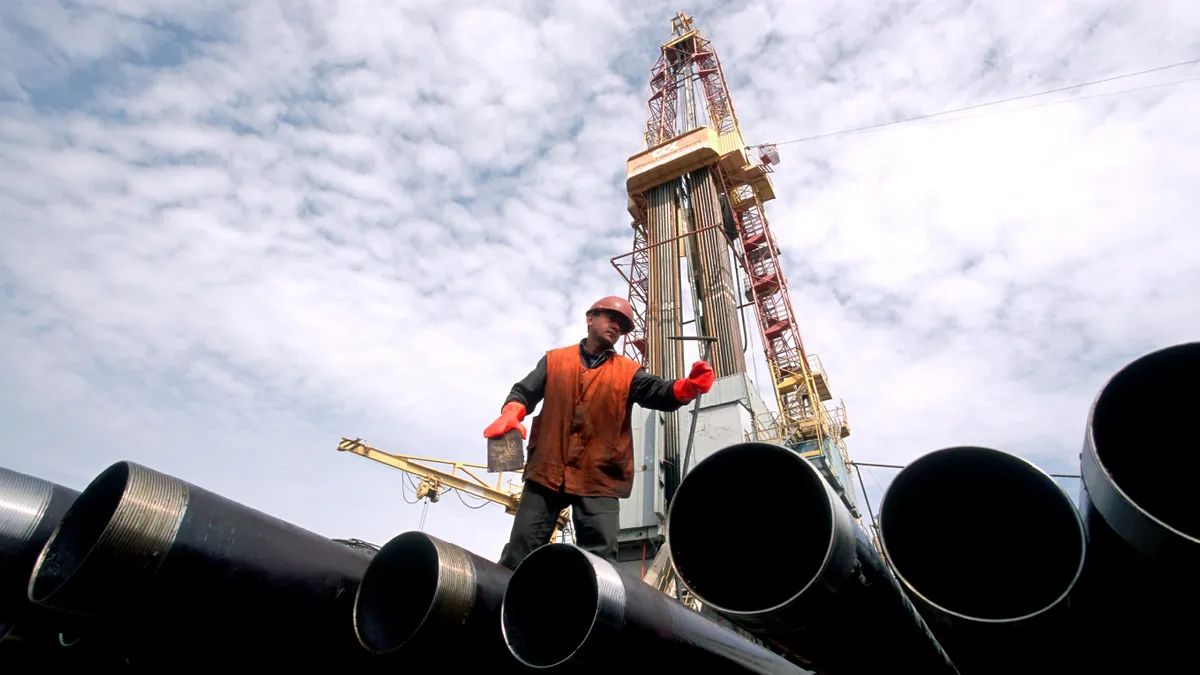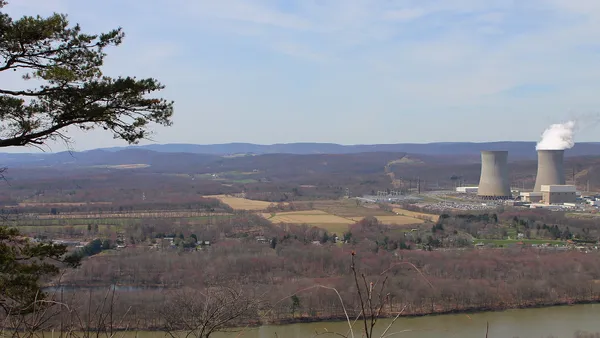Dive Brief:
- Electric utilities are turning to investments in natural gas to stabilize their bottom line, but a former federal regulator warns customers could get stuck paying for those investments if technology moves quickly, Bloomberg reports.
- Former Federal Energy Regulatory Commission Chairman Jon Wellinghoff said if the price of battery storage continues to fall, it could allow enough solar and wind onto the system to endanger gas investments.
- Florida Power & Light, which last year got authorization to buy directly into gas reserves, will show a loss this year for that investment, though the utility still expects it to be net positive for its customers.
Dive Insight:
Gas prices remain near or at historic lows, and utilities are eyeing investments in reserves, wells and pipelines as a way to lock in a long-term source of cheap fuel. But former FERC head Wellinghoff told Bloomberg that the jury is still out on those investments, and may ultimately hinge on the falling cost of renewables and energy storage.
“These utilities are taking a risk that these will be stranded assets that ultimately their shareholders will have to pay off," Wellinghoff told the news outlet. "We will see regulators being more critical of these asset decisions as prices of renewables continue to go down."
Bloomberg notes that Southern California Edison recently said battery storage is set to compete against peaking plants. According to BNEF Analyst Andrew Turner, “in five years’ time, we would expect batteries to be even more likely an attractive option for longer. ... And they’re just going to get cheaper.”
Those comments echo those of James Avery, chief development officer for San Diego Gas & Electric, when he told attendees at a conference last month that he sees "a future where there will be no more gas turbines."
But gas is cheap also, and may stay that way. Henry Hub gas, the liquid point often used as a benchmark, traded at $3.84 per thousand cubic feet (Mcf) in 2013. Next year, the U.S. Energy Information Administration predicts $3.14/Mcf. And U.S. stocks of gas are around all-time highs, maintaining pressure on the commodity.
It's the low price which has enticed so many investments. South Dakota-based Black Hills Corp. recently asked regulators in five states to allow its utility subsidiaries to make ratepayer-financed investments in natural gas resources. New Hampshire has cleared the way for utilities to purchase pipeline capacity. Southern Co. got a toehold in the market when it bought AGL Resources, a gas distributor.
Duke Energy, which owns regulated utilities operating in several states, is developing the Atlantic Coast Pipeline through its commercial pipeline business, along with Dominion. Some of Duke's regulated utilities will be customers of the pipeline.
But FP&L's gas investments in the Woodford shale of Oklahoma are the first to show a return – and so far, it hasn't been good. After partnering with PetroQuest Energy to develop 38 production wells in the southeast portion of the state, the utility said the investment would return a loss this year. Longer-term, however, the utility expects it to be a boon for customers.
In its original request for approval from the Public Service Commission, filed in June 2014, FP&L told regulators it had identified $107 million as the midpoint of the range of anticipated customer savings. That figure was based on a “variety of factors, including natural gas forecasts at that time,” a company spokesperson said via email. A revised estimate of $49.2 million in cumulative savings is still within the projected range, they said.
“Even with natural gas prices historically low, and even though we might be anticipating a loss in the first year, we are estimating nearly $50 million in savings for customers over the life of the Woodford project – savings that are above and beyond the cost of the investment,” Sarah Gatewood, FP&L senior communications specialist, told Utility Dive.















